
Opinion BY Armin
Italicized Mail
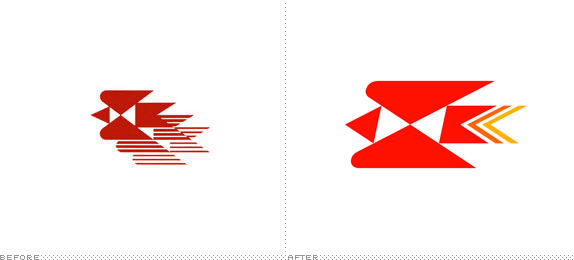
This will be a fairly short introduction and light in informative design background because the little information there is about this is in Korean — but, as always, the universal language of identity design will get us through this together. Korea Post is the mail carrier of Korea in charge of all postal services and the financial services offered by the post offices. A new identity, exhaustively covered in this brand manual, is now being implemented.
Continue reading this entry

DATE: Sep.09.2010 POSTED BY: Armin
POSTED BY: Armin CATEGORY: Government
CATEGORY: Government  COMMENTS:
COMMENTS:

TAGS: bird, icon, korea, red, sans serif,

Opinion BY Armin
The Swedish Right Gets Stacked
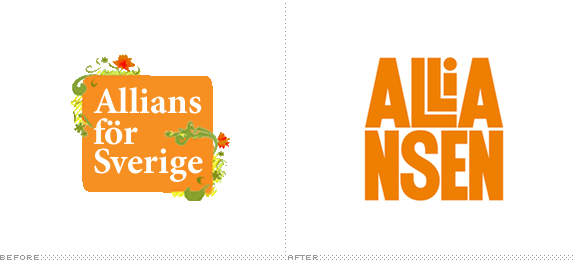
To our Swedish readers this will be old news and the following brief introduction might fail to convey the political subtleties that this topic entails. In 2006 the four right-wing parties of Sweden — the Moderate Party, Centre Party, Liberal People’s Party, and Christian Democrats — formed the Allians för Sverige (Alliance for Sweden) as a way to stand stronger against the left-wing Social Democratic Party, which has led Swedish politics for the last 70 years. While each of the four allied parties is still running on their own, the Allians allows them so stand together on common issues. This past March, the Allians för Sverige changed its name to, simply, Alliansen (The Alliance) and introduced a new logo in preparation for the 2010 elections. The logo was designed by Stockholm-based Garbergs.
Continue reading this entry

DATE: Jun.24.2010 POSTED BY: Armin
POSTED BY: Armin CATEGORY: Government
CATEGORY: Government  COMMENTS:
COMMENTS:

TAGS: alliansen, garbergs, sans serif, sweden,

Opinion BY Armin
God Save the Queen and Space
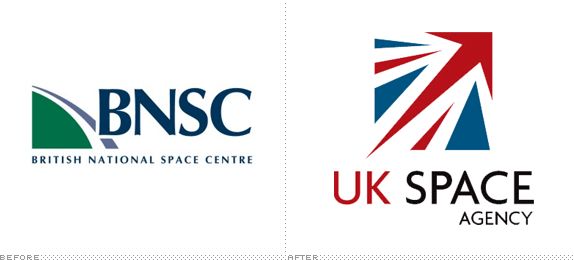
As most countries attempt to rebound from the last couple years worth of nasty economy, perhaps the last idea anyone had for a boost was to create a new space agency. Yesterday, Lord Mandelson, the UK’s Business Secretary, announced the creation of the UK Space Agency, “Exactly,” he said, “the kind of high value-added industry we need to support as we rebalance our economy, creating sustainable growth and the jobs of the future.” Complementing that sentiment was Lord Drayson, Minister for Science and Innovation, “We’re acting now, because this is a critical moment in the economic cycle — a point where existing markets are set to grow and new markets set to emerge. This is the time to go for growth.” The new agency will replace the 24-year-old British National Space Centre as the go-to body for all things space related. For such a high stakes, important venture, it sure has a funny logo.
Continue reading this entry

DATE: Mar.24.2010 POSTED BY: Armin
POSTED BY: Armin CATEGORY: Government
CATEGORY: Government  COMMENTS:
COMMENTS:

TAGS:

INTL. REVIEW BY Bruno Córdova POSTED BY Brand New
Horror Government (and Logo)
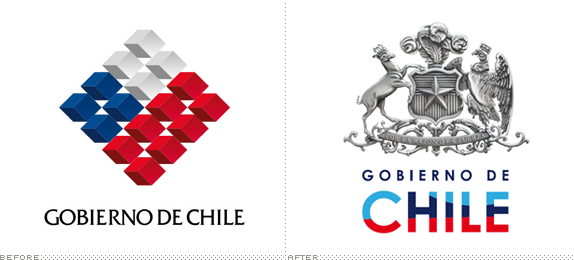
After the devastation caused by a 8.8 earthquake, 210 miles south from Santiago, an aftershock destroyed a cubed logo used during ten years of socialist Presidents (Ricardo Lagos, Michelle Bachelet). On March 9th, two days before Sebastián Piñera inauguration, his appointed-to-be speaker announced a new official logo for the incoming administration. Piñera, a conservative businessman, won a run-off in last january, becoming the first right-wing candidate to be democratically elected President in 52 years.
Continue reading this entry

DATE: Mar.22.2010 POSTED BY: Brand New
POSTED BY: Brand New CATEGORY: Government
CATEGORY: Government  COMMENTS:
COMMENTS:

TAGS:

Opinion BY Armin
The Missile Defense Agency Logo Conspiracy Theory

“It is the policy of the United States,” reads the Missile Defense Agency (MDA) web site, “to deploy as soon as is technologically possible an effective National Missile Defense system capable of defending the territory of the United States against limited ballistic missile attack (whether accidental, unauthorized, or deliberate).” That policy will be $1.2 billion short starting this year, as President Obama announced cost cuts last fall to a missile defense system plan that had been instated by the George Bush administration in 2002. Needless to say, with every Obama critic looking for any excuse to go on the offensive, this decision certainly had vociferous opposition — all perfectly acceptable as long as it’s within reason and rationalization. As opposed to, for example, the latest spewing of inanity that the new logo of the MDA is a sign that Obama and its administration are in cahoots with the Islamic populace and are giving Iran free reign to launch missiles willy nilly.
Continue reading this entry

DATE: Feb.25.2010 POSTED BY: Armin
POSTED BY: Armin CATEGORY: Government
CATEGORY: Government  COMMENTS:
COMMENTS:

TAGS:

Opinion BY Armin
European + Organic = Euro-Leaf

In April of last year, the European Commission’s Directorate-General for Agriculture and Rural Development announced a competition — open only to design and art students from the 27 EU Member States — that “[Offers] a prize that money just can’t buy” according to the press release, “The winning logo will be introduced as the official logo for organic products throughout the European Union in July 2010.” In charge of filtering the first round of submissions was a panel of judges that included a combination of designers like Erik Spiekermann, Riitta Brusila-Räsänen, Szymon Skrzypczak, and Elisabeth Mercier, and non-designers from the organic industry like Urs Niggli and Tom Václavík, all of them overseen by Rob Vermeulen, former president of the Pan-European Brand Design Association. And the whole thing came with all the typical fine print of a design contest that tends to ruffle so many feathers. Nonetheless, 3,422 entries were submitted — you can see various of them here.
Continue reading this entry

DATE: Feb.18.2010 POSTED BY: Armin
POSTED BY: Armin CATEGORY: Government
CATEGORY: Government  COMMENTS:
COMMENTS:

TAGS:

InTL. REVIEW BY Deza Nguembock POSTED BY Brand New
With Copyright Protectors Like These, who Needs Enemies?
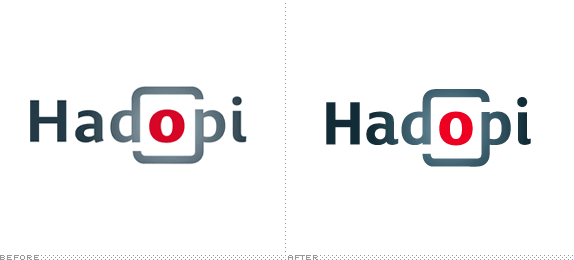
Haute Autorité pour la Diffusion des Œuvres et la Protection sur Internet (HADOPI) — more or less, High Authority Promoting the Distribution and Protection of Creative Works on the Internet — is a law project that aims to stop illegal downloading of copyright protected work; warning twice those who illegally download copyright protected work, before shutting off their internet connection for an indefinite period of time on the third infraction. While the Hadopi law won’t enter into effect until the spring of 2010, the agency of the same name has already been established and operating since early January. But the bigger story surrounding the law is Hadopi’s new identity, designed by Plan Créatif on behalf of the French Ministry of Culture and Communication: The identity included two pirated typefaces when it was officially unveiled to the public on January 8.
Continue reading this entry

DATE: Feb.02.2010 POSTED BY: Brand New
POSTED BY: Brand New CATEGORY: Government
CATEGORY: Government  COMMENTS:
COMMENTS:

TAGS:

BY Armin
Two Logos for the Road to Recovery

How the government spends its citizens hard-earned tax dollars has always been frustrating and unsatisfying, mostly because it’s only after the fact that one realizes what that money is being used for. With the American Recovery and Reinvestment Act (ARRA) — following the transparency mantra of the Obama administration — a brisk attempt is being made at continually disclaiming where, how and when those tax dollars are being used. Whether you approve of their use is another issue, of course. To make things even more evident to the public, two logos were unveiled yesterday, that will serve to brand all projects under the auspices of the ARRA.
Continue reading this entry

DATE: Mar.04.2009 POSTED BY: Armin
POSTED BY: Armin CATEGORY: Government
CATEGORY: Government  COMMENTS:
COMMENTS:

TAGS:

































